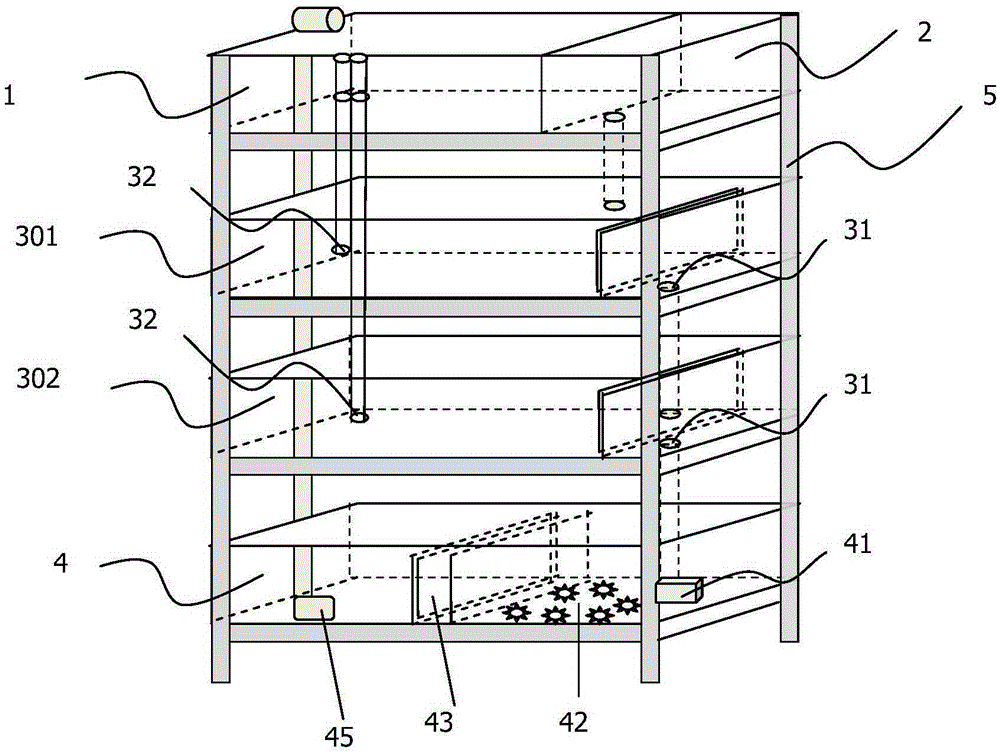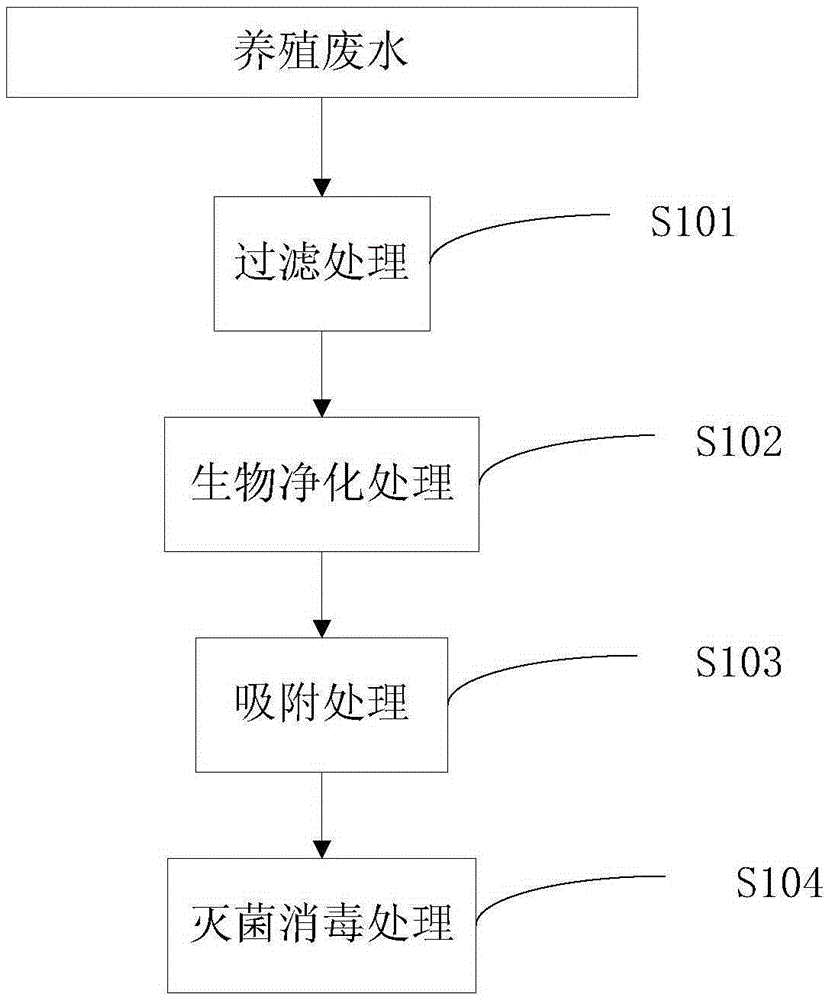Breeding method for parabotia fasciata dabry fry
A technology of paraloach and seedlings, applied in fish farming, application, climate change adaptation, etc., can solve the problem of resource decline of paraloach, achieve high-density, safe and low-cost breeding, neat maturation time, Suitable for a wide range of effects
- Summary
- Abstract
- Description
- Claims
- Application Information
AI Technical Summary
Problems solved by technology
Method used
Image
Examples
Embodiment 1
[0053] Embodiment 1 is equipped with the culture system of water purification facility
[0054] Such as figure 1 As shown, the system of the present invention includes: a reservoir 1, a replenishment pond 2, a cultivation pond 3, and a water treatment pond 4 arranged sequentially from top to bottom, and for supporting the reservoir 1, replenishment pond 2, and cultivation pond 3 and the device of the three-dimensional multi-layer stainless steel frame 5 of the water treatment tank 4 and the filter unit 41, biological purification unit 42, adsorption unit 43, disinfection unit 44 and circulation pump 45 .
[0055] Wherein, the filter unit 41 is connected with the sewage outlet of the cultivation pond 3 through a water pipe, and the sewage in the cultivation pond 3 is discharged into the water purification system, and the water outlet of the circulating pump 45 is connected with the water outlet of the cultivation pond 3 through a water pipe. The water inlet of the storage tan...
Embodiment 2
[0072] The purification treatment of embodiment 2 aquaculture wastewater
[0073] Such as figure 2 The purification flow chart of the shown aquaculture wastewater includes:
[0074] Step S101, filtration treatment: the aquaculture wastewater discharged from the water outlet is treated by a filter device to remove large-scale sediments such as feces and residual bait in the wastewater, so that the aquaculture water becomes clear and transparent. In order to improve the purification effect, the filter device needs to be cleaned every day.
[0075] Step S102, biological purification treatment: the filtered aquaculture wastewater passes through a biological purification device to take the nitrogen in the aquaculture wastewater out of the ecosystem and eliminate the ammonia nitrogen produced by the decomposition of organic matter.
[0076] Step S103, adsorption treatment: the biologically purified aquaculture wastewater passes through an adsorption device to absorb small-volume ...
Embodiment 3
[0080] Embodiment 3 utilizes wild piebald loach to cultivate seedlings
[0081] 1. Selection of broodstock
[0082] From May to July in 2012 and 2013, the adult fishes of wild paraloach with a body length of 13-18 cm and a body weight of 13.5-82 g were collected from the Zizhong-Longchang section of the Yangtze River tributary-Tuojiang River, and were stored in a laboratory plastic greenhouse with a size of 4m×2.5 After one year of domestication and cultivation in the m×0.8m cement pond, they were transferred to the breeding system as broodstock in 2013 and 2014 respectively.
[0083] 2. Breeding of broodstock
[0084] The female broodstock and male broodstock obtained in step 1 are stocked in the culture system provided in Example 1 at a ratio of 1:1 to 1.5, and the culture density is 20 to 40 fish / m 2 .
[0085] 2.1 Feed feeding management
[0086] During the cultivation process, from mid-December to March of the next year, feed the broodstock once at 12:00 noon the next...
PUM
 Login to View More
Login to View More Abstract
Description
Claims
Application Information
 Login to View More
Login to View More - R&D
- Intellectual Property
- Life Sciences
- Materials
- Tech Scout
- Unparalleled Data Quality
- Higher Quality Content
- 60% Fewer Hallucinations
Browse by: Latest US Patents, China's latest patents, Technical Efficacy Thesaurus, Application Domain, Technology Topic, Popular Technical Reports.
© 2025 PatSnap. All rights reserved.Legal|Privacy policy|Modern Slavery Act Transparency Statement|Sitemap|About US| Contact US: help@patsnap.com


